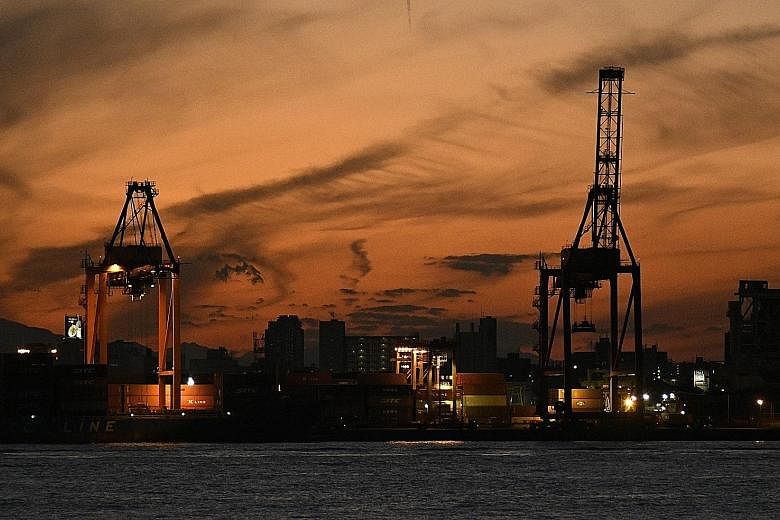TOKYO • Japan's economy grew much slower than initially estimated in the third quarter, revised data showed, as capital expenditure dried up and companies ran down inventories - renewing concerns about Japan's growth prospects.
The Cabinet Office said yesterday that the economy grew at a 1.3 per cent annualised rate in the July to September period, a severe revision from the 2.2 per cent annualised growth first estimated.
Capital expenditure (Capex) fell 0.4 per cent in the quarter, versus the preliminary estimate of 0 per cent, as steel and real estate companies reduced investment.
On the positive side, consumer spending was revised upwards and separate data showed service sector sentiment improved. But weak Capex may temper optimism that the economy could accelerate heading into next year.
"Capex and consumer spending are the twin engines of domestic demand, and I'm not convinced that both will recover strongly," said Mr Norio Miyagawa, senior economist at Mizuho Securities. "We have government stimulus and a weak yen, so the economy will continue to grow, but growth will be modest."
Inventories subtracted 0.3 percentage point from growth, more than a preliminary reading of a 0.1 percentage point contraction, which showed that a recent build-up in inventories was slowing, and a positive sign that companies were able to sell excess goods, Mr Miyagawa said.
-
1.3%
Annualised rate of economic growth in the July to September period.
-0.4%
Fall in capital expenditure in the quarter.
0.3%
Rise in private consumption, as households spent more on food and beverages, TV sets and domestic travel.
Net exports added 0.3 percentage point to growth in the July to September period, less than a 0.5 percentage point contribution in the previous quarter.
However, economists were optimistic that exports would pick up in the future as the yen had fallen to an eight-month low after Mr Donald Trump was elected president of the United States.
Japan's government has also approved a stimulus package with 7.5 trillion yen (S$93.4 billion) of spending on public works, which should marginally support growth next year, economists said.
Private consumption, which accounts for roughly 60 per cent of the economy, rose 0.3 per cent, versus the preliminary estimate of 0.1 per cent growth, as households spent more on food and beverages, TV sets and domestic travel.
The government adopted a new base year for calculating gross domestic product (GDP), which lifted nominal GDP closer to Prime Minister Shinzo Abe's target level.
The new calculation method, which will include research and development as Capex for the first time to conform with international standards, has been applied to growth data going back to 1994.
Because of this change, business investment was 17 per cent higher last quarter than previous data had suggested, according to senior Japan economist Marcel Thieliant at Capital Economics in Singapore.
REUTERS

